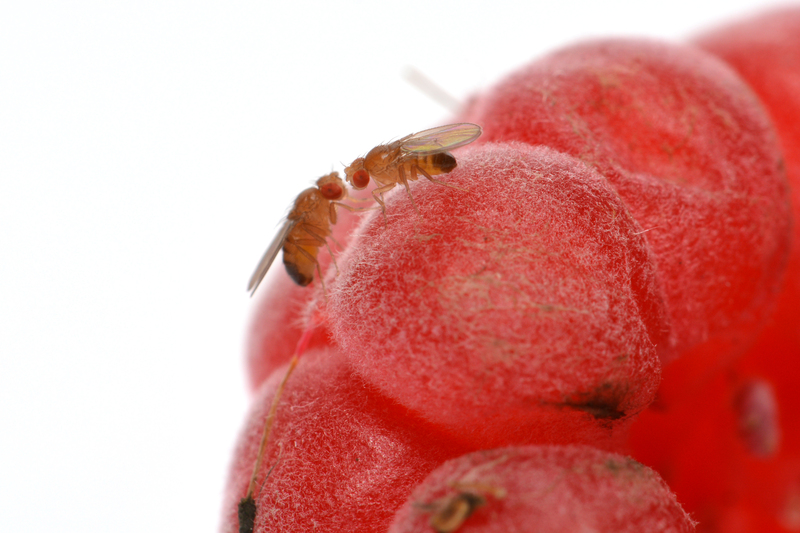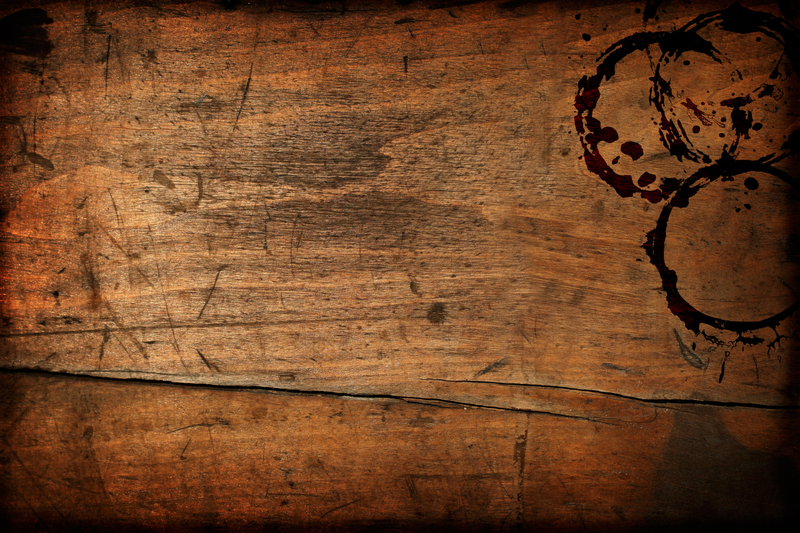Easy Steps to a Bathroom Devoid of Mold
Posted on 10/06/2025
Easy Steps to a Bathroom Devoid of Mold
A mold-free bathroom isn't just desirable for the sake of appearances--it is essential for the health of you and your family. Bathrooms are uniquely vulnerable to mold growth due to constant moisture and humidity. In this comprehensive guide, you'll discover easy steps to a bathroom devoid of mold. We'll provide practical, effective strategies for mold prevention, cleaning, and long-term maintenance, ensuring your bathroom remains fresh, safe, and inviting.

Understanding Mold: The Hidden Threat in Bathrooms
Mold is a type of fungus that thrives in damp, dark environments--making bathrooms an ideal breeding ground. Mold exposure can lead to various health issues, including allergies, respiratory problems, and skin irritation. More importantly, unchecked mold can damage walls, ceilings, and fixtures, resulting in costly repairs.
- Mold spores are microscopic and can be present anywhere, waiting for the right conditions to grow.
- High humidity and poor ventilation are the primary contributors to bathroom mold.
Why Is Mold Prevalent in Bathrooms?
Bathrooms constantly experience water splashes, steam, and condensation. Without sufficient airflow, wet surfaces dry slowly, providing a perfect environment for bathroom mold to flourish, often unnoticed until it becomes unsightly or damaging.
Step 1: Ensure Proper Bathroom Ventilation to Prevent Mold
The most critical step towards a mold-free bathroom is improving ventilation. Proper airflow helps prevent humidity buildup--mold's best friend.
- Install an Exhaust Fan: Use a vent fan during and after bathing or showering. Ideally, leave it running for at least 20 minutes post-shower.
- Open Windows: Whenever possible, open bathroom windows to allow fresh air to circulate and reduce moisture levels.
- Leave Doors Open: After using the bathroom, prop the door open to facilitate airflow and quick drying.
Good ventilation is the foundation of a mold-resistant bathroom. Without it, other cleaning and maintenance steps will have reduced effectiveness.
Step 2: Eliminate Excess Moisture Immediately
Mold only needs about 24-48 hours of moisture to start growing. Reducing bathroom moisture can be as simple as wiping down wet surfaces.
- Wipe Shower Walls and Doors: After showering, use a squeegee or towel to dry tiles, glass doors, and fixtures.
- Fix Leaks Promptly: Dripping faucets, leaking pipes, or trickling toilets often cause hidden mold growth behind tiles and walls.
- Dry Towels and Mats: Hang towels and bath mats in a way that lets them dry thoroughly between uses.
By nipping moisture in the bud daily, you'll keep mold at bay and create a bathroom devoid of mold.
Bonus Tip:
Consider investing in a bathroom dehumidifier if your space consistently remains humid, especially in windowless bathrooms.
Step 3: Regular Cleaning with Mold-Fighting Solutions
Maintaining a bathroom without mold requires regular cleaning, particularly of areas prone to moisture accumulation--like grout lines, caulking, and shower corners.
- Use Anti-Mold Cleaners: Clean your bathroom surfaces weekly with mold-inhibiting household cleaners, vinegar, or diluted bleach (never mix bleach and ammonia or vinegar).
- Scrub Grout and Tile Lines: Mold often takes hold in the grout between tiles, so use a brush and baking soda paste or a store-bought mildew cleaner for scrubbing.
- Clean Shower Curtains and Liners: Wash these items frequently. Replace plastic liners as soon as they show mold spots.
- Disinfect Drains: Pour a solution of vinegar and water (or a commercial disinfectant) down drains to remove mold spores and buildup.
Regular cleaning not only eliminates visible mold but also removes spores waiting to grow.
Step 4: Choose Mold-Resistant Materials
Upgrading your bathroom with mold-resistant products is a powerful preventive measure during renovations or redecorating.
- Mold-Resistant Paint: Paint walls and ceilings with mildew-resistant paints for long-term protection.
- Seal Grout and Tiles: Apply a waterproof sealant to tile and grout lines regularly to prevent water infiltration.
- Opt for Solid Surface Materials: Materials like quartz, glass, or acrylic are less porous than stone or wood and less likely to harbor mold.
- Select Mold-Resistant Caulk: Use a siliconized, mildew-resistant caulking compound around sinks, tubs, and showers.
Taking this proactive approach substantially reduces the likelihood of recurring mold issues in your bathroom.
Step 5: Address and Repair Water Damage Promptly
Water leaks and damage are major contributors to persistent mold issues. Even minor leaks can result in significant mold growth if ignored.
- Inspect Plumbing Regularly: Look for leaks around faucets, bathtubs, showerheads, and under sinks.
- Check Seals and Caulking: Replace cracked or peeling caulk, especially in high-moisture areas.
- Monitor for Water Stains: Water stains on ceilings or walls signal hidden leaks or condensation issues--it's crucial to address them immediately.
Quick action not only stops mold but also prevents costly structural repairs in the long run.
Step 6: Organize and Declutter the Bathroom
A cluttered bathroom provides more surfaces and tight corners where mold can thrive unnoticed. Decluttering can help your cleaning efforts and minimize the areas where moisture lingers.
- Minimize Unnecessary Items: Store lotions, shampoos, and other products in enclosed cabinets, not on countertops or ledges.
- Use Open Storage: Choose open or hanging storage that promotes air circulation over closed bins.
- Hang Loofahs and Sponges to Dry: Don't leave these items in the shower puddled with moisture--hang them in a way that allows for complete drying.
A well-organized bathroom is easier to keep clean and dries more efficiently--a winning combination for a mold-free environment.
Extra Step: Keep Humidity in Check
Install a humidity monitor (hygrometer) in your bathroom. Aim to keep humidity levels below 50%. If they frequently exceed this range, use a portable dehumidifier or improve existing ventilation.
Step 7: Routine Inspection for Early Detection
Mold can develop and spread rapidly. By making inspections part of your cleaning routine, you can catch and address bathroom mold issues while they're still minor.
- Visual Inspection: Check corners, behind toilets, around faucets, and under sinks for any signs of mold growth or musty odors.
- Feel for Moisture: Pay attention to persistent dampness or soft spots on walls and floors, which may indicate hidden mold or leaks.
- Check Exhaust Fan: Ensure your fan is working efficiently and clear of dust, as a clogged fan loses its effectiveness.
- Clean Vents and Filters: Dust and clean bathroom air vents periodically to maintain optimal airflow.
Early detection makes removal easier and less expensive, preventing small problems from escalating.
Remove Mold Safely if Detected
Even with proper prevention, bathroom mold can sometimes sneak in. Quick and safe removal is crucial.
How to Remove Small-Scale Bathroom Mold
- Wear Protective Gear: Use gloves, goggles, and if possible, a mask to avoid inhaling spores.
- Prepare Cleaning Solution: Mix one part bleach with ten parts water, or use white vinegar (for natural cleaning).
- Scrub Affected Areas: Use a stiff brush or sponge to remove mold from tiles, grout, and other hard surfaces.
- Rinse and Dry: Rinse with water, dry thoroughly, and leave the area ventilated until completely dry.
If the mold covers an area larger than 10 square feet or if it keeps returning, consult a professional for safe, comprehensive remediation.
Common Mistakes to Avoid in Bathroom Mold Prevention
- Neglecting ventilation, especially after hot showers.
- Allowing spills or splashes to air-dry slowly--always wipe down immediately.
- Ignoring persistent leaks--small drips add up over time.
- Assuming visible mold is the only problem--it often starts in unseen areas.
- Skipping regular cleaning schedules--consistency is key for long-term mold prevention.

Summary: Your Mold-Free Bathroom Checklist
- Ventilate your bathroom effectively every day.
- Eliminate moisture as soon as possible.
- Clean regularly using mold-inhibiting products.
- Repair leaks and address water damage swiftly.
- Use mold-resistant materials where possible.
- Declutter to reduce hidden mold hotspots.
- Inspect routinely to catch issues early.
By implementing these easy steps for a bathroom free from mold, you're ensuring not just a prettier, but a much healthier home environment.
Conclusion: Enjoy a Healthier Bathroom Experience
A bathroom devoid of mold is entirely achievable with proactive attention and good habits. Don't wait for unsightly stains or musty smells to signal a problem. With steady maintenance, proper materials, and prompt moisture control, you'll keep mold at bay and enjoy a sparkling, hygienic bathroom for years to come. Stay vigilant, stay clean, and let your bathroom shine mold-free!




